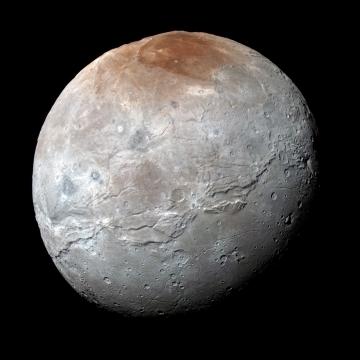Bob Eklund has had a lifelong love affair with the sky, having been raised by a grandfather working at a major astronomical observatory in Wisconsin. For many years he has helped the Mount Wilson Observatory with their public education and outreach programs. Bob is the author of a book of poetry and essays about astronomy, First Star I See Tonight. Following a corporate career as an editor and business communicator, he now assists local residents with their business and personal writing/editing/proofreading needs. See www.bobeklund.com.

Looking Up – Bob Eklund
NASA’s New Horizons spacecraft has returned the best color and the highest resolution images yet of Pluto’s largest moon, Charon—and these pictures show a surprisingly complex and violent history. At half the diameter of Pluto, …[READ MORE]









